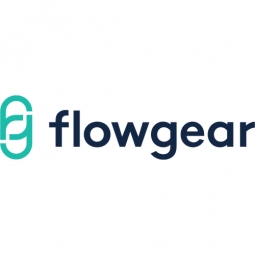Download PDF
Coricraft Streamlines Inventory Management with Flowgear Integration
Technology Category
- Application Infrastructure & Middleware - Data Exchange & Integration
- Application Infrastructure & Middleware - Middleware, SDKs & Libraries
Applicable Industries
- Consumer Goods
- Retail
Applicable Functions
- Warehouse & Inventory Management
Use Cases
- Inventory Management
- Picking, Sorting & Positioning
Services
- System Integration
The Challenge
Coricraft, a leading South African furniture manufacturer and retailer, faced a significant challenge following a recent acquisition. The company needed to integrate data between the acquired company's system and its own SYSPRO ERP system. The acquired company was generating between 500 and 1000 new product codes per week, necessitating an automated integration system. Additionally, Coricraft had to manage stock movement between its 70 warehouse and store locations, each with its own inventory. This was a labor-intensive manual operation that was time-consuming and inefficient.
About The Customer
Coricraft is a leading South African furniture manufacturer and retailer that has experienced continuous growth since its inception 20 years ago. Starting as a single store, the company has expanded its operations and now has 70 warehouse and store locations. Coricraft recently acquired a company that generates between 500 and 1000 new product codes per week. The company uses the SYSPRO ERP system for its operations and needed a solution to integrate data from the acquired company's system into its own.
The Solution
Coricraft turned to Flowgear, a cloud-based integration platform provider, to address its data integration and inventory management challenges. The company started by synchronizing inventory data between the SYSPRO system and the acquired company. It also used Flowgear to update stock movement between its multiple warehouses and stores. The advantage of the Flowgear platform was that Coricraft could start in one area without incurring high costs and expand it later. The use of Flowgear has significantly reduced the time taken for tasks that were previously done manually, from hours to minutes and in some cases, from days to minutes.
Operational Impact
Quantitative Benefit
Related Case Studies.
.png)
Case Study
Improving Vending Machine Profitability with the Internet of Things (IoT)
The vending industry is undergoing a sea change, taking advantage of new technologies to go beyond just delivering snacks to creating a new retail location. Intelligent vending machines can be found in many public locations as well as company facilities, selling different types of goods and services, including even computer accessories, gold bars, tickets, and office supplies. With increasing sophistication, they may also provide time- and location-based data pertaining to sales, inventory, and customer preferences. But at the end of the day, vending machine operators know greater profitability is driven by higher sales and lower operating costs.

Case Study
Improving Production Line Efficiency with Ethernet Micro RTU Controller
Moxa was asked to provide a connectivity solution for one of the world's leading cosmetics companies. This multinational corporation, with retail presence in 130 countries, 23 global braches, and over 66,000 employees, sought to improve the efficiency of their production process by migrating from manual monitoring to an automatic productivity monitoring system. The production line was being monitored by ABB Real-TPI, a factory information system that offers data collection and analysis to improve plant efficiency. Due to software limitations, the customer needed an OPC server and a corresponding I/O solution to collect data from additional sensor devices for the Real-TPI system. The goal is to enable the factory information system to more thoroughly collect data from every corner of the production line. This will improve its ability to measure Overall Equipment Effectiveness (OEE) and translate into increased production efficiencies. System Requirements • Instant status updates while still consuming minimal bandwidth to relieve strain on limited factory networks • Interoperable with ABB Real-TPI • Small form factor appropriate for deployment where space is scarce • Remote software management and configuration to simplify operations

Case Study
How Sirqul’s IoT Platform is Crafting Carrefour’s New In-Store Experiences
Carrefour Taiwan’s goal is to be completely digital by end of 2018. Out-dated manual methods for analysis and assumptions limited Carrefour’s ability to change the customer experience and were void of real-time decision-making capabilities. Rather than relying solely on sales data, assumptions, and disparate systems, Carrefour Taiwan’s CEO led an initiative to find a connected IoT solution that could give the team the ability to make real-time changes and more informed decisions. Prior to implementing, Carrefour struggled to address their conversion rates and did not have the proper insights into the customer decision-making process nor how to make an immediate impact without losing customer confidence.

Case Study
Digital Retail Security Solutions
Sennco wanted to help its retail customers increase sales and profits by developing an innovative alarm system as opposed to conventional connected alarms that are permanently tethered to display products. These traditional security systems were cumbersome and intrusive to the customer shopping experience. Additionally, they provided no useful data or analytics.







